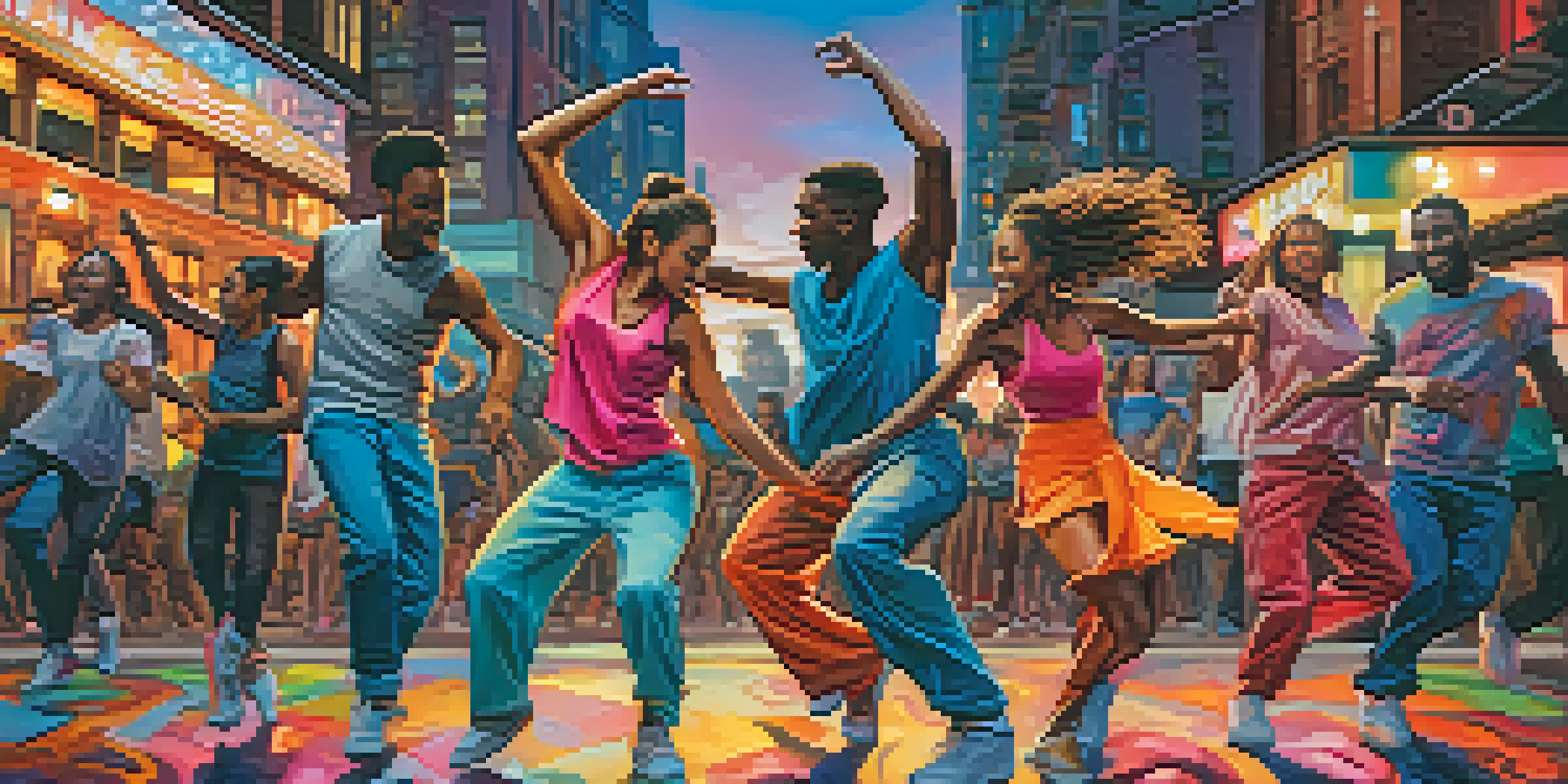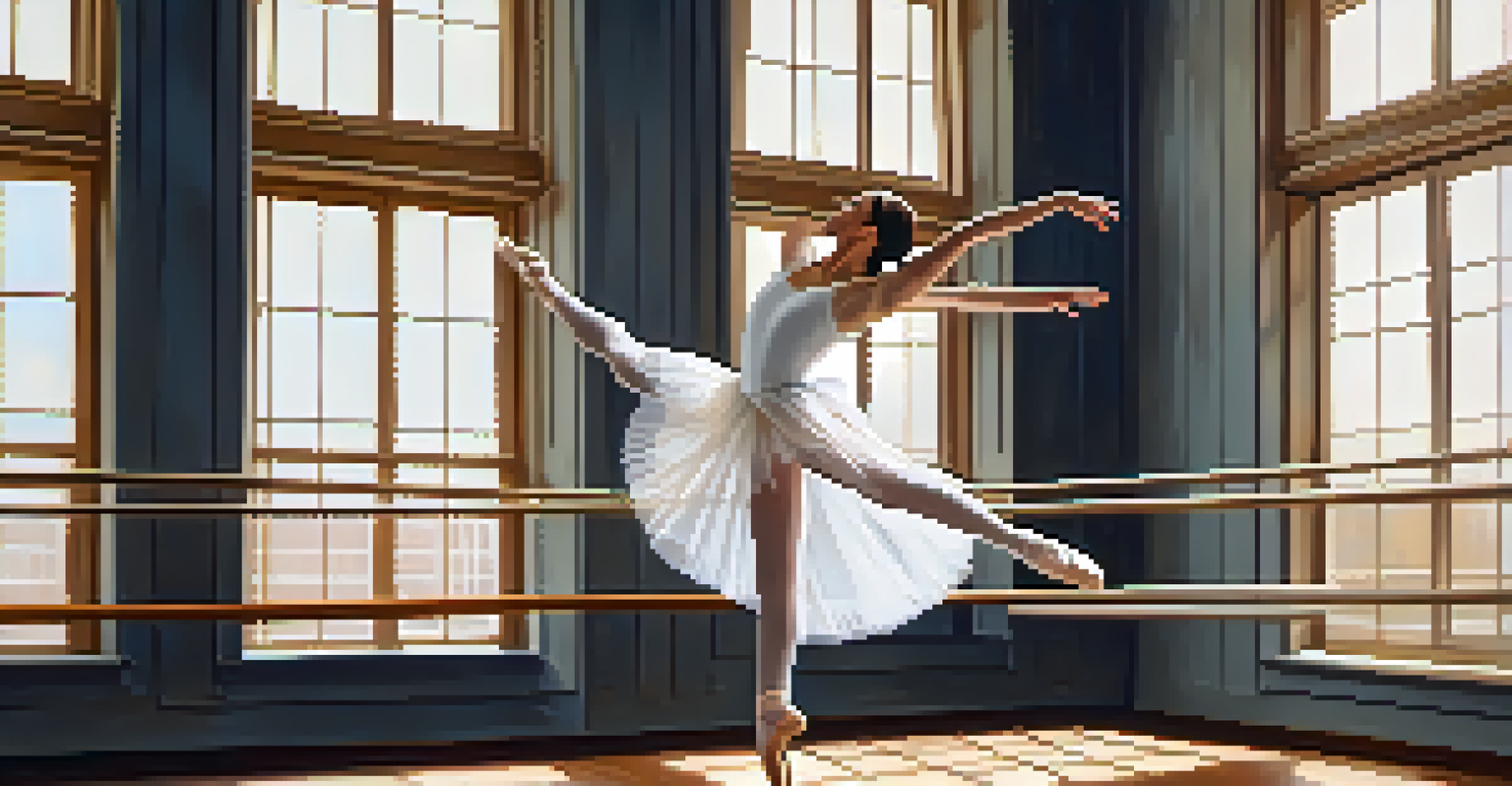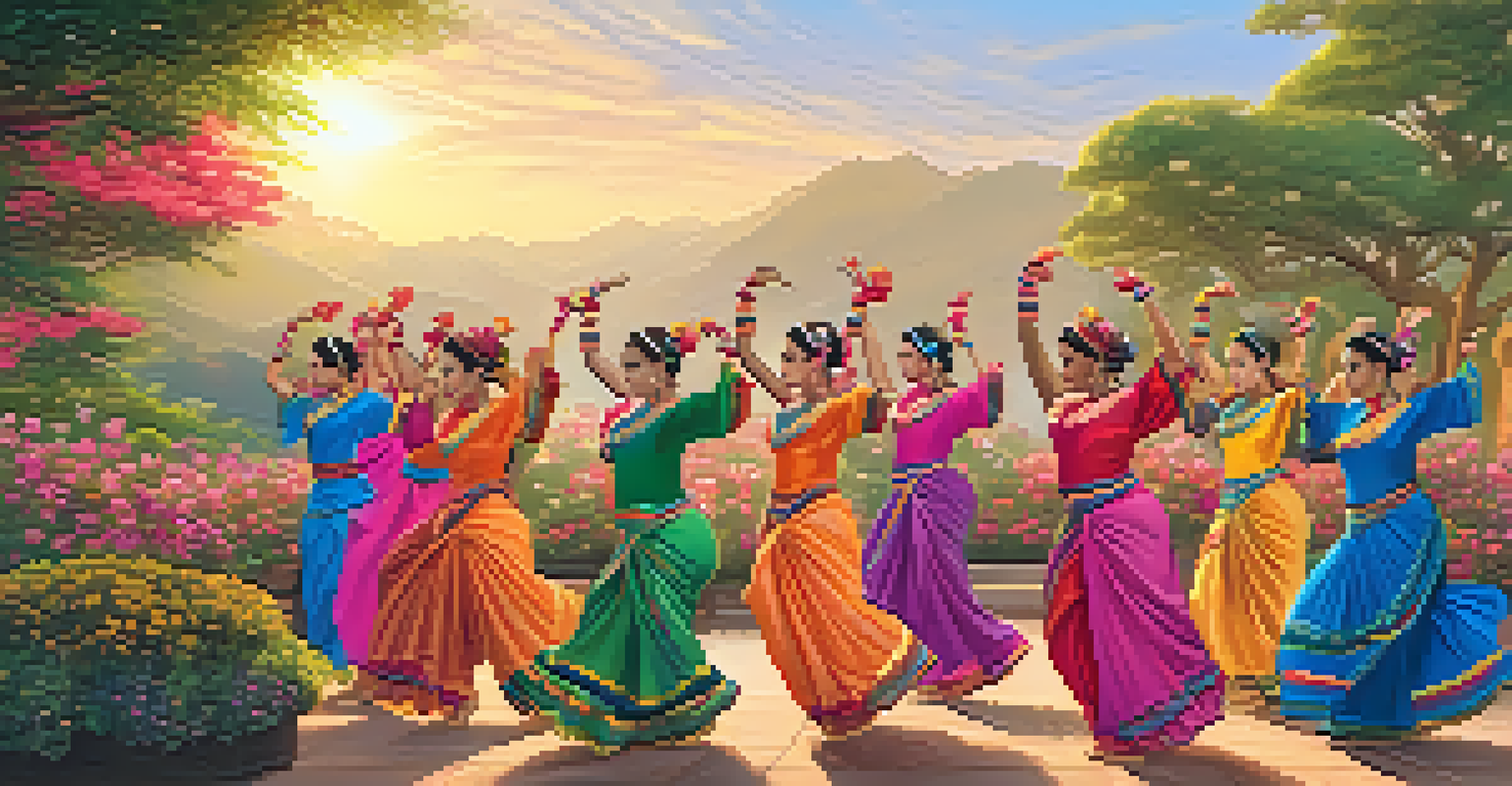Dance and Cinema: Storytelling Through Movement on Screen

The Power of Movement in Film Storytelling
Dance is a universal language that transcends words, making it a powerful tool in film storytelling. When characters dance, they express emotions and narratives that dialogue alone often cannot convey. This physicality adds depth to their stories, engaging the audience on a visceral level.
Dance is the hidden language of the soul.
Consider how a single dance sequence can reveal a character's inner turmoil or joy. For instance, in 'La La Land,' the iconic opening number not only sets the tone for the film but also introduces the aspirations of its characters. Such moments create a connection between the audience and the story, enhancing the overall cinematic experience.
Moreover, movement can encapsulate complex themes, such as love, loss, and freedom. Directors often use dance to illustrate these concepts visually, allowing viewers to interpret the emotions presented through the fluidity of motion rather than through spoken words.
Historical Roots of Dance in Cinema
The relationship between dance and cinema dates back to the early days of film. Silent films often incorporated dance as a means of storytelling, with performers using their bodies to convey emotions without spoken dialogue. This art form quickly became a staple, with films featuring elaborate dance routines that captivated audiences.

Iconic figures like Fred Astaire and Ginger Rogers revolutionized this marriage of dance and film, showcasing how movement can elevate a narrative. Their performances in movies such as 'Top Hat' not only entertained but also advanced the plot, demonstrating the potential of dance as an integral storytelling device.
Dance Enhances Film Storytelling
Movement in film allows characters to express deep emotions and narratives that dialogue alone often cannot convey.
As cinema evolved, so did the portrayal of dance, adapting to cultural shifts and technological advancements. Modern films often blend various dance styles, reflecting the diversity of storytelling while keeping the art form alive and relevant.
Choreography: The Heart of Dance in Film
Choreography plays a crucial role in the integration of dance and cinema. A well-crafted dance sequence can transform a mundane scene into a captivating narrative moment. Choreographers collaborate closely with directors to ensure that every movement serves the storyline, enhancing character development and emotional arcs.
The dance is a poem of which each movement is a word.
For example, in 'Black Swan,' the choreography not only showcases the protagonist's evolution as a dancer but also mirrors her psychological struggles. The intricate movements reflect her descent into madness, making the dance a narrative device that deepens the viewer's understanding of her character.
By meticulously designing each dance sequence, filmmakers can create moments that resonate emotionally with the audience, making choreography an essential element in storytelling through movement.
Cultural Significance of Dance in Film
Dance in cinema often reflects cultural identities and social issues, serving as a mirror to society. Films like 'West Side Story' and 'Footloose' not only entertain but also address themes of love, conflict, and rebellion through dance. These narratives become a platform for dialogue about cultural dynamics and societal change.
Through diverse dance styles, filmmakers can celebrate different cultures, bringing attention to their unique stories. For example, 'Coco' beautifully incorporates traditional Mexican dance, allowing viewers to experience the richness of its heritage while engaging with the film's central themes of family and memory.
Cultural Reflection Through Dance
Dance in cinema serves as a mirror to cultural identities and social issues, fostering understanding and empathy among audiences.
As audiences connect with these cultural representations, dance becomes a vehicle for understanding and empathy, enriching the cinematic experience while fostering a sense of community and belonging.
Iconic Dance Scenes That Defined Cinema
Certain dance scenes have become iconic, leaving an indelible mark on cinema history. Think of the timeless dance in 'Dirty Dancing' where Johnny and Baby's final performance encapsulates their journey and love story. Such moments not only define the characters but also resonate with audiences, becoming memorable cultural touchstones.
Another example is the exhilarating dance battle in 'Step Up,' which showcases the power of expression through movement. This not only entertains but also highlights the competitive spirit of the characters, driving the narrative forward and engaging the audience in their journey.
These iconic scenes remind us that dance is more than just choreography; it's about storytelling, emotion, and connection. They inspire future filmmakers to explore the integration of dance in their narratives, ensuring its lasting impact on cinema.
Dance as a Reflection of Human Emotion
Dance has an incredible ability to express human emotions, often conveying feelings that words cannot articulate. In films, characters might dance to celebrate joy, mourn loss, or navigate complex relationships, allowing audiences to feel alongside them. This emotional resonance is what makes dance such a powerful storytelling tool.
For instance, in 'The Notebook,' the dance scene reflects the deep, abiding love between the characters, capturing the essence of their relationship in a way that dialogue alone might not achieve. It creates a moment of intimacy that invites viewers to experience their love story on a more profound level.
Iconic Dance Scenes Shape Cinema
Memorable dance sequences have become cultural touchstones, showcasing the power of movement to tell stories and evoke emotions.
Ultimately, the ability of dance to encapsulate emotions enhances the storytelling in film, creating unforgettable moments that linger in the minds of viewers long after the credits roll.
The Future of Dance in Cinema
As technology advances and new platforms emerge, the future of dance in cinema looks promising. Virtual reality and augmented reality are beginning to integrate dance in innovative ways, allowing audiences to experience movement in immersive environments. This evolution opens up exciting possibilities for storytelling through movement.
Additionally, the rise of social media has given dancers and choreographers a broader platform to showcase their work, influencing cinema's future. Short dance films and viral challenges often inspire feature-length films, reflecting the ever-evolving nature of storytelling through movement.

Looking ahead, the fusion of dance and technology promises to create new narratives that challenge traditional storytelling methods, ensuring that dance remains a vital part of cinema's artistic landscape.